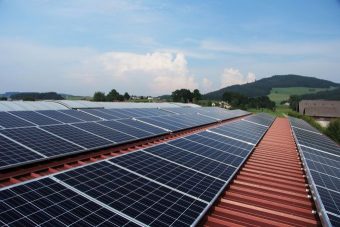
Australia’s Federal Government this week announced a new energy policy that walks away from introducing a post-2020 Clean Energy Target of 42% in favor of a National Energy Guarantee that puts the power of choice into the hands of the nation’s utilities.
Despite the fact that it was proposed by Australia’s Chief Scientist Alan Finkel and subsequently endorsed by just about everyone across the spectrum, a Clean Energy Target (CEC) of 42% electricity supplied by wind and solar was dismissed this week by the Australian Federal Government, in favor of the National Energy Guarantee, described by the Department of the Energy and Environment as “a plan that will deliver an affordable and reliable energy system that will also help meet our international commitments.”
Or, in short, Australia’s Prime Minister Malcolm Turnbull has followed in the path of his Liberal Party’s attacks on renewable energy and support of the country’s fossil fuel industry, using the scare tactic of lower energy prices to justify the decision.
The National Energy Guarantee is made up of two aspects which the Department for Energy and Environment believes “will require energy retailers and some large users across the NEM to deliver reliable and lower emissions energy generation each year.” They are:
A reliability guarantee will be set to deliver the right level of dispatchable energy — from ready-to-use sources such as coal, gas, pumped hydro and batteries — needed in each state. It will be set by the AEMC and AEMO.
An emissions guarantee will be set to contribute to Australia’s international commitments. The level of the guarantee will be determined by the Commonwealth and enforced by the AER.
Further, the Department hopes that the National Energy Guarantee will achieve the following:
Puts downward pressure on household and business power bills and reduces spot price volatility — more investment and therefore more supply of electricity puts downward pressure on prices.
Encourages the right investment in the right place at the right time — to meet the obligation, retailers will need to secure power from a variety of sources ensuring an ongoing place for coal, gas, wind, solar, batteries and hydro in the nation’s energy mix.
Improves reliability — increasing investment in new and existing dispatchable supply.
Reduces emissions at lowest cost — emissions targets can be met using a range of technology, including existing resources.
Is not a subsidy or a tax — allows the lowest cost range of technologies to meet overall targets.
“Under this scheme, the wholesale price would be expected to be lower relative to today and lower compared to a certificate-based scheme,” said Kerry Schott AO, Chair, Energy Security Board. “Since retailers will need to contract with new low emissions and dispatchable generators, the increased supply will place downward pressure on wholesale prices.”
Unsurprisingly, the decision to step away from a Clean Energy Target was met with disappointment by clean energy supporters in the country.
“The Clean Energy Target was the best opportunity in years to lock in the long-term bipartisan energy policy needed to encourage investment in cleaner energy while improving system reliability and pushing down power prices,” Clean Energy Council Chief Executive Kane Thornton. “We are obviously waiting to see more detail on the policy later today, but media reports today suggest the new policy would result in a substantial slowdown in levels of investment in clean energy.”
Source: cleantechnica.com

